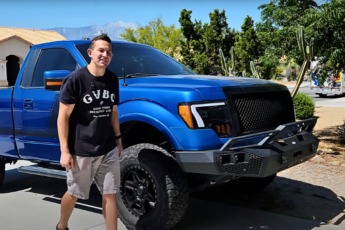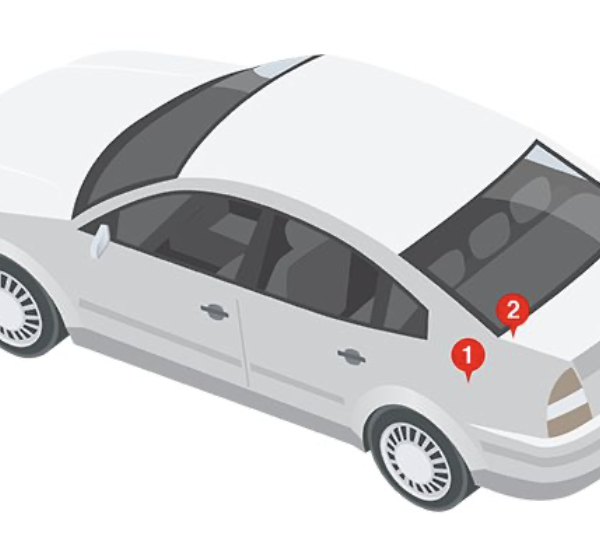How to Protect Car Paint in The Summer

Oh, those lazy, crazy days of summer! While they might be filled with fun and relaxation for you, they can take a major toll on your car or truck. Hot tires on a very warm road can cause blowouts. Heat, combined with the vibration that comes during long car trips, can shorten the lifespan of your battery. Hot engines need even more lubrication; therefore, being vigilant about oil changes is all the more important. If your coolant levels are too low, your engine could overheat and sustain permanent, catastrophic damage. Your windshield wiper blades can even actually melt if the thermometer really soars. Finally, your vehicle’s exterior can take a beating from the multi-pronged onslaught of sun, bird droppings, dead insects and flying gravel. That is why it is important that you take precautions ahead of time to protect your car’s general well-being.
Parking in a garage or out of the sun is your best option. However, that is not always possible. For times when you cannot avoid the rays, use sunshades in your front and back windshields. Invest in products that can protect the vinyl or leather of your car’s upholstery and dashboard. If your local ordinances and laws allow, you might also consider getting tinted windows to minimize the heat if you will be parking outdoors a great deal.
The good news is that washing and drying your car is much more fun in the summer. However, avoid taking on the task in direct sunlight since it can cause water deposits that can damage your car’s finish.
It is also tempting to let your car dry naturally in the sun and wind after you have finished washing it. In a word, don’t. Use a soft, clean cloth to remove the water, and your car’s exterior will thank you.
Waxing gives your car a great shine, but that’s not all. It protects against scratches, brings out the color of your paint and helps to prevent fading and oxidation caused by sun exposure. How often you should wax your car is up for debate, but manufacturers generally suggest every 45 days. On the other hand, some products claim to last an entire year. If you have the time and money and especially if you want your car to have a mirror-like showroom finish, you might want to do the job once every month or two.
Investing in a car cover can go a long way toward protecting your vehicle. Decide if you want one that is custom-made for your car or universal. Custom-made models hug every curve and are the gold standard; universal covers are also effective and have the advantage of being less expensive. Finally, ask yourself if you will be needing to protect your car from the dust and small bumps that can happen in a garage or from the sun damage, tree sap and bird droppings found outside. Whichever is the case, there are high-quality car covers on the market that can meet your needs.
What To Do If Your Paint Job Is Already Damaged
No doubt about it, driving is hard on vehicles. Unless you shelter your car in a garage and never take it on the road, it is bound to sustain damage to its finish. The good news is that there are steps you can take to rehabilitate damage that has already been done, and it does not need to break the bank.
Your first job is to remove that stubborn outer layer of road grime, brake dust, small particles, and paint. Only a clay bar will allow you to do a truly thorough job. The detailing clay removes contaminants and elements that could ultimately corrode your vehicle’s finish if left to their own devices. To clay your car, first, wash and dry it as you normally do. Then spray a liberal coat of clay lube on a section. Then glide a small piece of clay on that area, moving in only one direction and using a light touch. You will feel and hear contaminants being picked up by the clay. Then move to the next section, making sure that the surface of the clay is clean. You can even use clay to clean your windows and wheels. When you are done, you will be left with a finish that is smooth and free of contaminants, the perfect canvas for touch up paint.
If the damaged area is quite small, using a touch-up paint pen is your best bet. Before you attempt to fill in the scratch or ding, practice your touch-up paint skills on the test card provided by the paint’s manufacturer. By doing so, you will get a feel for the way the paint flows and the proper degree of pressure to be used. Before the big moment, use a de-greasing solution to make extra sure that the area is totally clean, letting the area dry completely. Apply two or three coats of primer, giving at least 15 minutes between each. Then put on three to four coats of base. Give each coat 15 minutes to dry before applying the next one. Next, apply two to four clear coats, leaving at least 15 minutes between each for drying. Finally, buff and polish the surface after anywhere from 24 to 72 hours of air drying.
Once the surface is buffed, take this opportunity to apply a coat of wax. After it dries, buff again. You should be impressed with the shiny, smooth results.
If the damage is significant and your efforts do not yield the results you had hoped for, it is time to take more extreme measures. If you do not want to go through the trouble of repeated sanding and spraying, it might be time to consult with your local mechanic or body shop.

 Cart
Cart
 Help Desk
Help Desk






